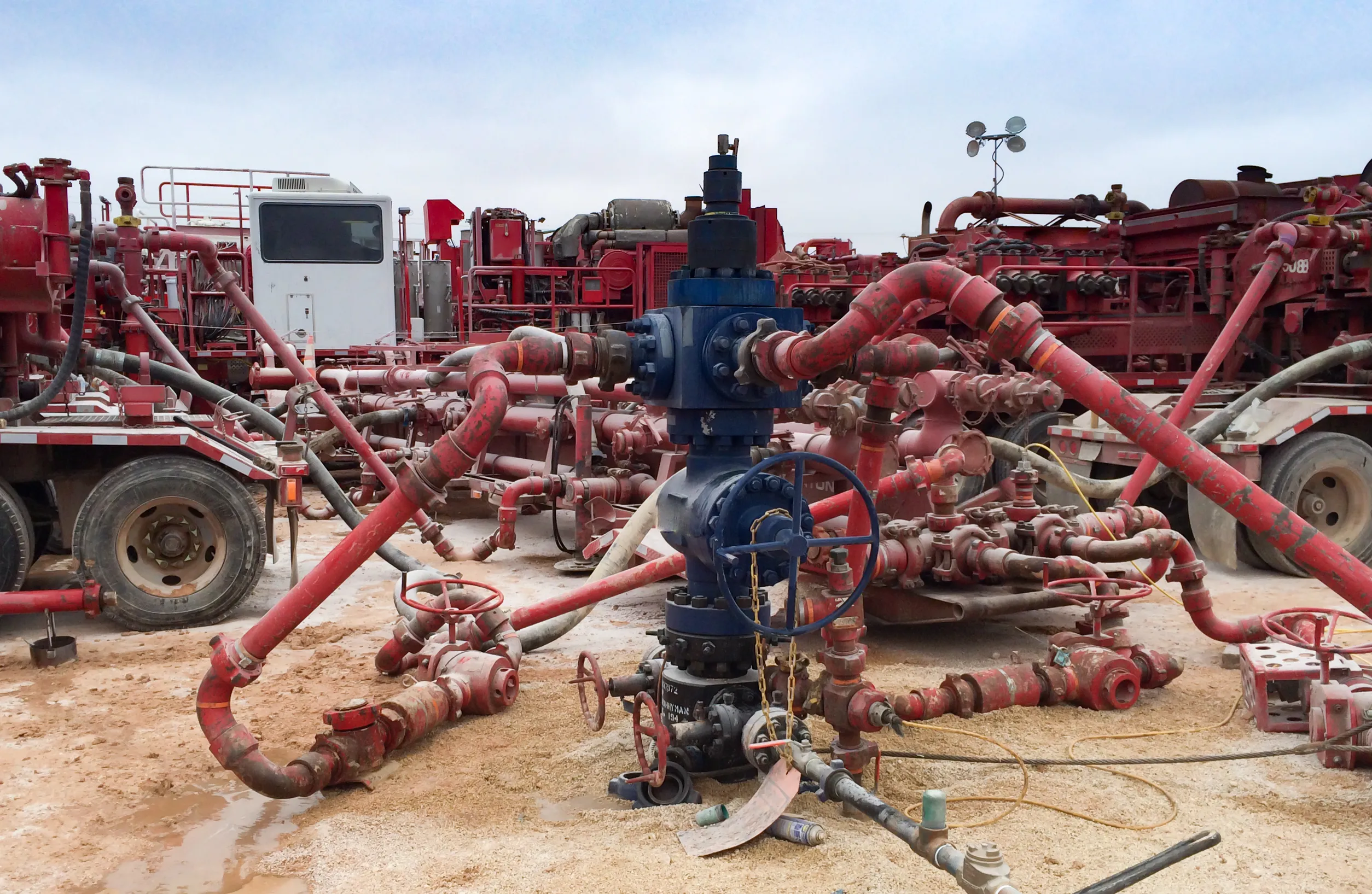August 13, 2024
Fracking wastewater is blowing out of old oilwells; the water can mean contaminated groundwater and unusable land
By Dylan Baddour of Inside Climate News and Carlos Nogueras Ramos of the Texas Tribune

A Permian wellhead surrounded by fracking equipment. (Adobe Stock photo
Taking fracking wastewater and injecting it miles underground is the cheapest and most common way to get rid of Texas oilfield used or "produced water," but a new study from Southern Methodist University found that the toxic water may not be staying underground. The study showed "a significant link between wastewater injection and oil well blowouts in the Permian Basin," report Dylan Baddour of Inside Climate News and Carlos Nogueras Ramos of the Texas Tribune. "It’s the first scientific proof of a phenomenon local landowners have long warned was occurring."
To study wastewater injections and blowouts, researchers "examined a January 2022 blowout in Crane County that gushed almost 15 million gallons of brine before it was capped, according to the paper. That would fill about 23 Olympic-sized swimming pools," Baddour and Ramos report. "The study traced the cause of the blowout to a cluster of nine injection wells about 12 miles to the northeast."
The connection between the Permian Basin's briny sprays and fracking wastewater "raises concerns about the possibility of widespread groundwater contamination in West Texas," Baddour and Ramos write. While the Texas Railroad Commission regulates the oil and gas extraction, it has "refrained from putting forth an explanation. . . . The link between injections and surface blowouts has remained unconfirmed, despite widespread suspicions." This recent study, which was published in the journal Geophysical Research Letters, "marks a big step forward in scientific documentation."
Attorney Sarah Stogner told Baddour and Ramos, "It just validates what we’ve been saying." Baddour and Ramos add, "For the last three years, Stogner has represented the Antina Cattle Ranch, where dozens of abandoned oil wells have been spraying back to life. Stogner persistently alleged that nearby wastewater injection was responsible. But she couldn’t prove it. . . . Now a scientific consensus is beginning to fall in behind her."
When old wells gush oil wastewater, the land that absorbs the salty mess is at risk. Baddour and Ramos explain, "West Texas ranchers who own land where contaminated water is seeping from underground are beginning to worry it will soon become uninhabitable. . . . Despite those problems, the Railroad Commission approved 400 new disposal wells in the Permian Basin alone in 2021, according to agency documents, and 480 in 2022."
To learn how fracking wastewater can contaminate groundwater, click here.